Top UGC Examples: Witnessing a 29% Spike in Conversion Rates

Whenever I shop online, I make the final purchase call ONLY after checking customer reviews on the website and social platforms. And I’m not alone; 93% of customers do the same. This shows the power of User-Generated Content (UGC).
UGC is in trend because customers tend to trust words said by existing customers more than in any marketing effort. In this era, not employing UGC means giving away your store’s revenue to your competitors. So, it’s time to rectify that mistake.
I’m writing this blog to help you get started with profit-generating through UGC. Whether you’re just starting or already have customers talking about your brand online; this blog post will help you level up your sales numbers. Also, we’ll look at top UGC examples from top brands.
But first, let’s start with BASICS.
What is User-Generated Content (UGC)?
User-generated content is content produced by users, customers, and fans, instead of brand-generated content.
It can be in the form of text, photo, video, or even a podcast, usually on social media platforms, and is about brands and their products. The advantage of UGC is that your customers are your brand ambassadors, showing the authenticity of your brand and products to your potential customers.
This often helps you increase brand awareness and brand loyalty, and build a community. If you’ve ever been to any restaurant and posted about it on your Instagram feed, then YES, you’ve created UGC.

How UGC is Different from Influencer Marketing?
People often confuse User-Generated Content with Influencer Marketing. So, let’s understand how they differ.

UGC is content created by independent people like YOU and ME talking about their experience with the brand, NOT any professional marketer or an influencer. Whereas, in influencer marketing, influencers are specifically hired to talk about the brand, with a collaboration that benefits both parties.
UGC can be anything such as; a review, testimonial, photos, videos, or social media post shared by a customer or brand. Influencer marketing can be identified when you see paid collaboration, be it on Instagram posts, YouTube product reviews, or mentions of the brand by an influencer.
Let’s better understand it with an example below.

At first glance, both of these videos look similar, right? Both of them are short videos where the creator is showing the product, and both have received better customer responses, too. So, where is the main difference?
Well, in the influencer’s post, you can see the label “paid partnership”. And in UGC content, you can see an individual rating her favorite products.
Why is UGC Important for Your eCommerce Store?
We understood what user-generated content is. But do you know how UGC can contribute to your eCommerce growth? Here are the major benefits of UGC on eCommerce Stores:
UGC Shows Your Products in Real Life
Every eCommerce website has photoshopped product images or videos, whereas UGC shows how the product looks in reality. And you know that customers’ purchase decision is highly influenced by “how the product would look in real life” or “how it is actually used”.
When a user posts content featuring your products, people get a trust factor that your product is working for someone, and it can work for them, too.
So, when your customers become your brand advocates and show their joy in using your product or share a unique way to use it, other users feel more attracted to your brand. It’s because the realness of UGC convinces your target audience more than anything.
Here are UGC examples from the Instagram feed and YouTube shorts.

UGC Has the Potential to Go Viral
UGC shows a fresh perspective, unique ideas, and genuine emotions toward your products, unlike traditional marketing methods that often seem scripted. And we all agree that emotions are key for any content to go viral.
So yes, the emotional touch in UGC prompts viewers to hit that share button and make you go viral.
Here is an example of how Chipotle’s #ChipotleLidFlip challenge went viral on TikTok and attracted thousands of people to try it for themselves.

People Believe in Word-of-Mouth
We know that UGC is all about word-of-mouth marketing. When your UGC gains position in your target audience’s social media feed, they’ll definitely turn their heads to you and won’t mind giving your products a try.
In fact, 90% of people say they would trust a brand recommended by a friend or stranger, more than any promotion.
This information clearly shows how fruitful results your eCommerce brand can achieve, if you effectively use UGC, as every aspect of it brings valuable benefits.
In short, there’s nothing not to like about UGC. Now let’s move ahead and know the different types of user-generated content.
Types of User-Generated Content
User-generated content is your MUST-HAVE strategy for marketing. But UGC comes in many forms. So, let’s understand the styles and formats of UGC that can be the right fit for your eCommerce store.
1. Product Reviews
One of the high-in-trend UGC is product reviews. It’s when customers leave reviews about products they’ve recently purchased on its website or on the platform where the brand is listed.
Usually, product reviews range from overall ratings, text reviews, and image reviews, to video reviews. Below is a perfect example of what I’m talking about.

These reviews are a staple need for every shopper (including us) before purchasing any product, isn’t it?
2. Social Media Posts / Mentions
For youth and most people, it’s been a trend to post and show off their lifestyle with products/services they use. Now, this indirectly helps those brands reach more of their target audience.
That’s the reason why social media posts and brand mentions are the second most highly preferred UGC by customers. These types of UGC play a big role in shaping your brand image in the mind of your target audience. Here’s a perfect example.

3. Q&As on Community Forums
Community forums are the best place for your customers to get answers to their questions and talk about your products.
A typical scenario includes a customer posting their viewpoints and reviews of your products on community forums, while others join the conversation by listing their doubts, concerns, or responses. These interactions help potential buyers make better purchase decisions.
To bring it in place and raise awareness, you can refer to online communities where your shoppers and target audience are available. Some of the best examples are Reddit and Quora. Here’s an example of how a customer can start a conversation about your product.
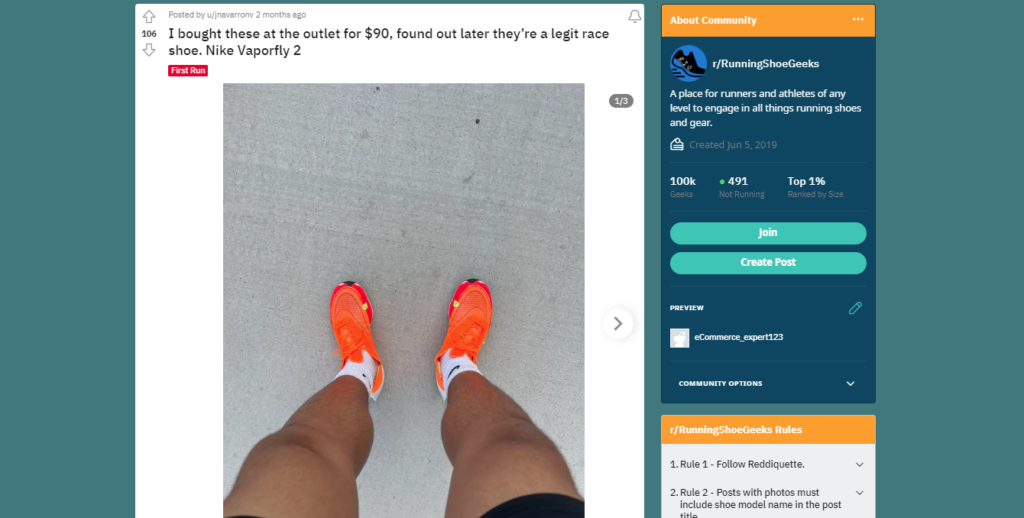
And here’s how others can get engaged by telling their own stories about your brand.

Moreover, you can also build your own online community where your customers can conduct Q&As and solve their doubts about your products.
4. Customer Testimonials
If you have a single product or are selling services, customer testimonials are all you need to grow your business, even more than product reviews.
They are highly necessary for any business to grow as they show the credibility of your brand. To put them into action, you can ask your customers to share written or video testimonials about their experience with your products, services, shipping, and overall satisfaction.
Later, you can add that customer review/testimonial on your website to encourage other customers. Also, to maintain authenticity, don’t forget to include customer photos and names alongside testimonials.
Here’s an example for you to look at.

5. DIY Tutorials
We often binge-watch hacks and DIY tutorials, right? Well, they are the best kind of UGC that can provide your eCommerce with ample benefits.
It’s shocking, but at the same time, it’s not. When your customers share their experiences, tips, and creative solutions through DIY tutorials, your target audience gets inspired to try them out.
This often results in increased customer engagement, conversion rates, and overall growth for your eCommerce business. Check the example below.

6. Customer Stories
Shoppers have this habit of showcasing the product or providing reviews in their personal social media stories. For many brands, it’s the best UGC that can help them build an emotional connection with their customers and audiences.
On top of that, it’s the easiest thing to do. When customers post stories of your product review while tagging you, simply reshare those stories on your profile. Later, add them to Instagram highlights so that your target audience can find them in the future as well.
Now, whenever your target audience visits your profile, you have customer testimonials in place to build trustful relationships. You can refer to the examples below.

And that’s all. Let’s move to another section where we’ll understand some of the best user-generated content examples from top eCommerce brands.
10 Best User-Generated Content Examples
Always keep an eye on BEST THINGS if you want to build one. It seems like a random saying, but it’s true.
If you want to include UGC in your marketing strategy and make it work for you, you must check some of the best user-generated content examples.
Taking inspiration from these UGC examples can help you increase your conversion rate (as UGC has proven results of increasing it by 29%). Let’s get started then.
1. Apple: #ShotoniPhone

#ShotoniPhone: Apple’s genius moves to invite users and post pictures of their best iPhone shots on social media, with the chance of featuring them on billboards, Apple retail stores, and online. The main idea behind this campaign was to improve brand identity, as users were dissatisfied with the average camera capabilities of the iPhone.
With over 28.6 million posts (to date) on Instagram alone, this campaign is one of the most successful UGC campaigns. In 2020, Apple introduced the “Shot On iPhone Night Mode Challenge,” where participants shared night mode images taken with their iPhone 11 models. This showcased the phones’ versatility for all shooting purposes.
Below is how Apple made an addition to its social media feed with content created by contest participants and appreciated their efforts.

2. Starbucks: White Cup Contest

In April 2014, Starbucks launched its UGC campaign named the “White Cup Contest.”
Through this campaign, Starbucks encouraged its customers to showcase their doodle art skills on limited edition Starbucks reusable plastic cups. Later, they were supposed to post photos of the finished product on social channels with their branded hashtag, #WhiteCupContest.
This campaign generated nearly 4,000 entries in just three weeks and changed the winner’s life with $350 worth of gift cards and a $150k salaried position. The campaign drew attention to Starbucks’ sturdy, reusable cups, which are part of its initiative to promote sustainability.
3. Calvin Klein: #MyCalvins
Remember the time when Calvin Klein launched its latest Spring 2016 collection with one viral UGC campaign? It required no big budget for advertisements, but they still captured the world’s attention.
This campaign consisted of celebrities wearing Calvin Klein apparel and posting it on their Instagram with one line — “I_____ in #MyCalvin”. These celebrities list included Justin Bieber, Kendrick Lamar, Joey Bada$$, Abbey Lee, and Kendall Jenner.
Celebrity posts influenced people to post the same and make it a trend, which helped Calvin Klein launch their product collection with a bang and in a cost-effective way, of course.

4. LEGO: LEGO Ideas
LEGO launched a campaign named LEGO Ideas, where designers can submit their unique LEGO creations. If a design gathers 10,000 supporters, LEGO reviews it for potential production and distribution. Creators receive royalties if their idea becomes a real LEGO product.
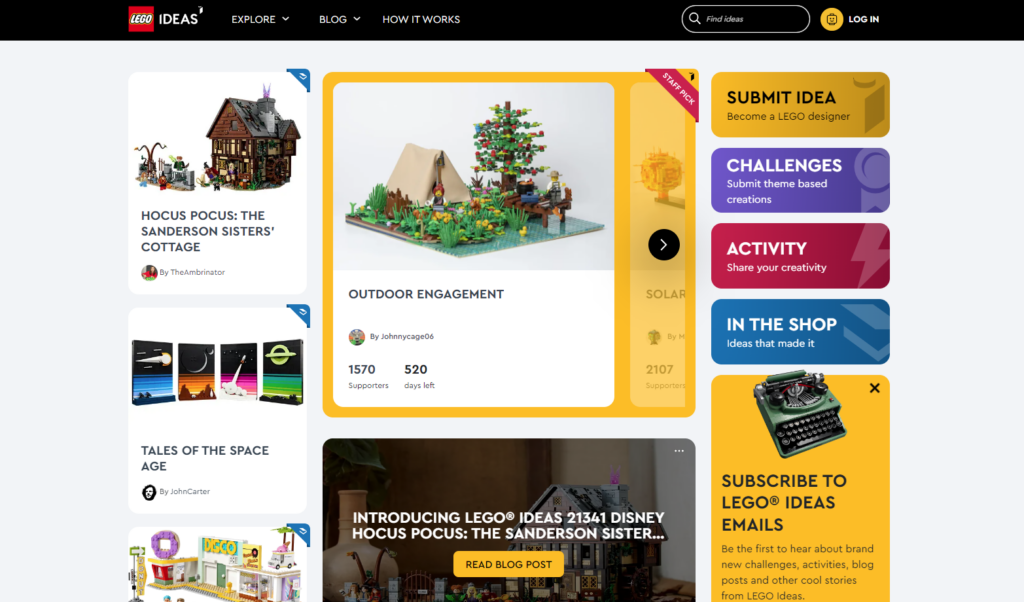
It became a fantastic opportunity for LEGO where fans gave them the best product ideas, and promoted LEGO products on their behalf. And no doubt it is one of the best UGC campaigns to date.
5. Coca-Cola: Share a Coke Campaign

The “Share a Coke” campaign by Coca-Cola was a massive success. They introduced Coke bottles with various names, leading people to search for their own names, as well as those of their friends and family. People got excited and shared pictures of these personalized Coke bottles across social media platforms.
Initially, the campaign was launched through traditional channels like newspapers and TV commercials. However, it was social media, particularly Facebook, where the campaign truly gained momentum and gained around 1.83 Million media impressions.
The campaign resulted in widespread engagement and created a sense of connection among customers.
6. Netflix: Stranger Things 2
So, you know how much people love the Netflix show “Stranger Things”, right? Well, Netflix came up with this cool campaign called “Stranger Thursdays” for the release of “Stranger Things 2”.
They asked fans to show off their creativity and love for the show, by sharing their own creations, artwork, videos, and stuff. This hashtag campaign required users to post their own content on social media platforms like Twitter, Instagram, and Facebook, including #StrangerThursdays.
They even got famous artists and influencers on board to add more fun to the whole thing.
And of course, it worked like a charm! The campaign helped Netflix in generating over 1 million audiences in just 2 weeks.
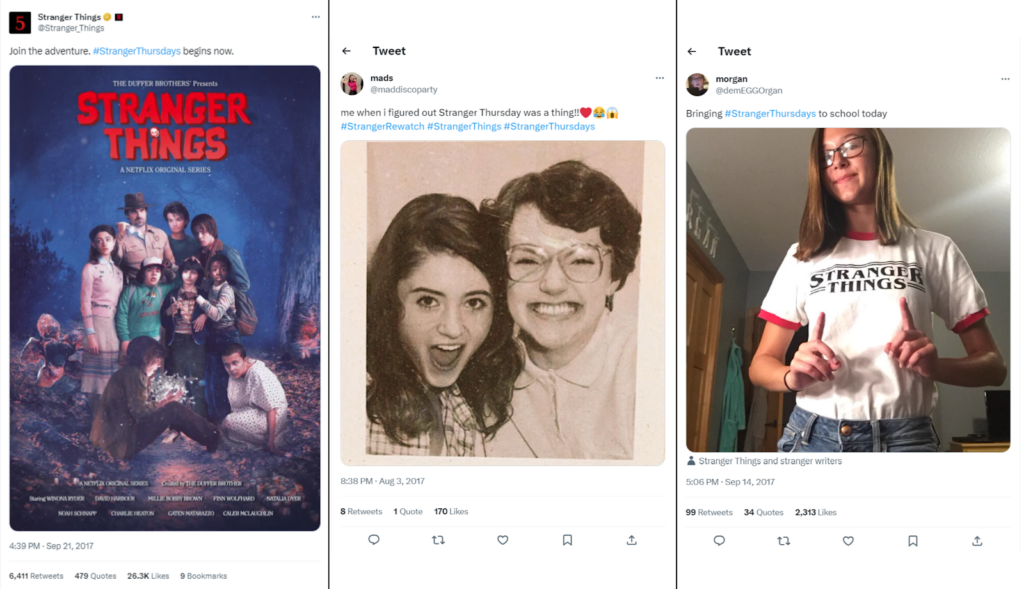
7. Spotify: #FindYourFeels

In 2021, Spotify launched a campaign to connect with Gen Z through the emotional power of music.
Through the campaign, they invited the audience to share their favorite playlists and express their emotions through music. Participants created playlists reflecting their feelings and shared them on social media with the hashtag #FindYourFeels.
The campaign effectively created a buzz among 18 to 24-year-olds, resulting in a boost of 91,000 monthly active listeners.

8. KFC: Chicken Sandwich
KFC launched a chicken sandwich campaign on TikTok to promote their new addition to the food menu: mouth-watering Chicken Sandwiches.
KFC already had an active and engaged customer base on TikTok, making it an ideal platform for them to conduct their UGC operations. Additionally, KFC collaborated with TikTok influencers to make authentic content and invite their Top Viewers to try their new food item, a chicken sandwich.
Finally, the campaign was a massive success.

9. Doritos: Legion of the Bold
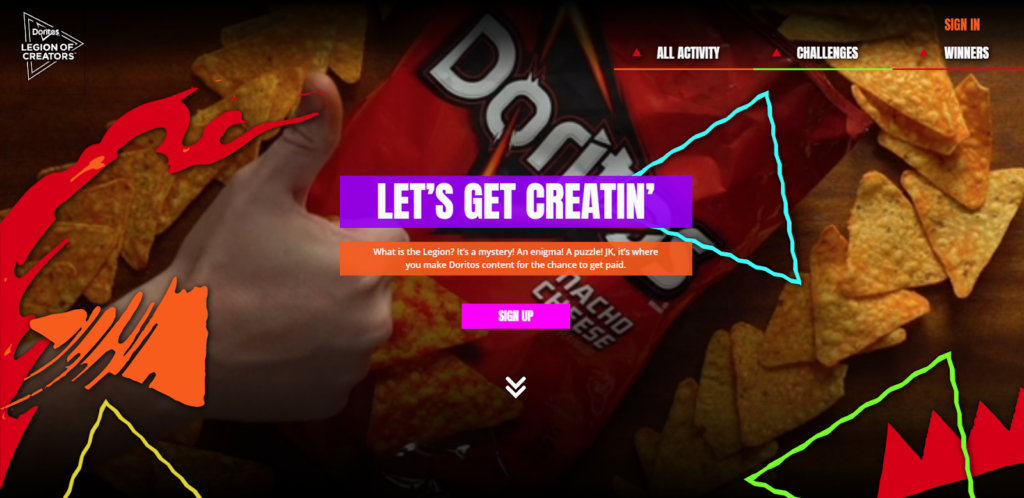
Doritos’ Legion of the Bold, this UGC Campaign was a cool marketing move they made. Instead of just promoting themselves, they allowed their fans to take the spotlight and show how much they love those tasty Doritos chips.
It was a win-win for both Doritos and their loyal fans. This ultimately boosted their brand’s visibility and helped them build a strong community among loyal Doritos fans.

10. ASOS: #AsSeenOnMe
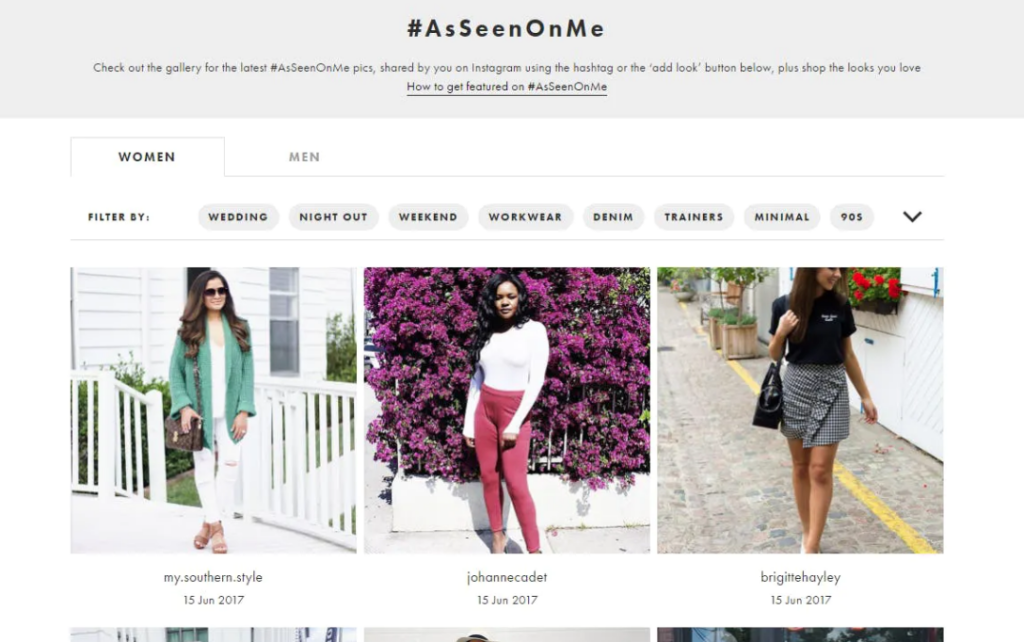
People are crazy about sharing #OOTD (Outfit of the Day) on social media channels. ASOS, a big name in the fashion world, thought, “Why not capitalize on this opportunity by creating a feed full of free advertising of their clothes?”
Back in 2014, ASOS launched a section on its website named “AS SEEN ON ME.” This section included images of customers wearing ASOS clothes instead of branded images. Customers had the option to share photos of their OOTD directly to ASOS.com or post them on Instagram with the hashtag #AsSeenOnMe.
In the end, sharing social media content on their website helped them increase active customers by 25% and their average order value grew by 2%.
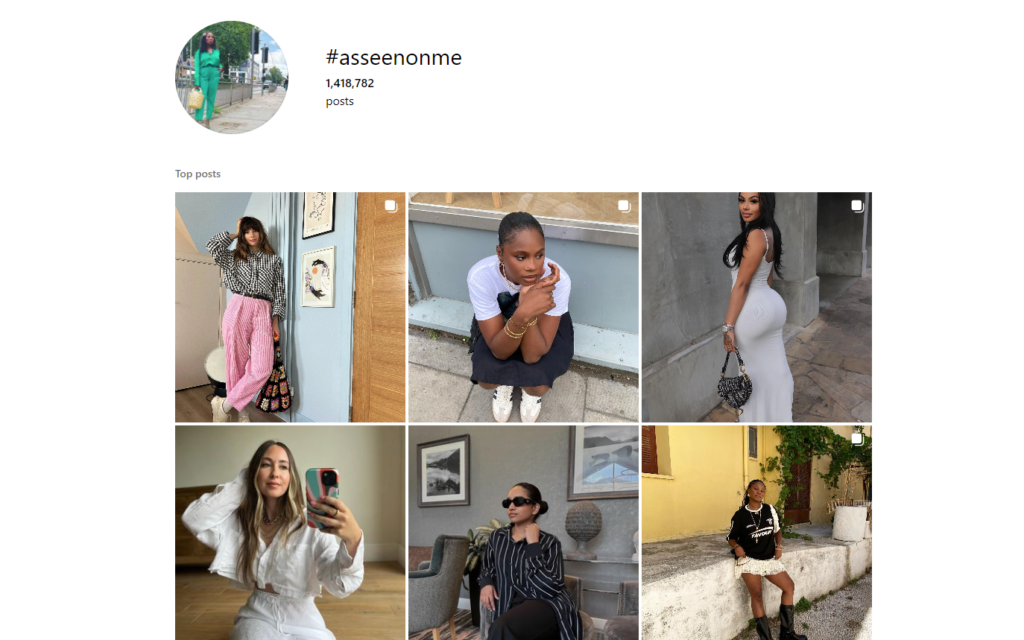
From branded hashtags to building social media walls on the website, these UGC examples show how to spark customers’ interest and promote products/services on a budget.
So, keep these examples in mind before curating a UGC campaign for your business.
How to Run User-Generated Content Campaigns?
Running a successful UGC campaign is a great way to engage customers, but things can go messy if the campaign is not planned properly.
To ensure your UGC campaign is a smashing success, here are some steps you can follow.
Step 1: Study Your Customer’s Social Behavior
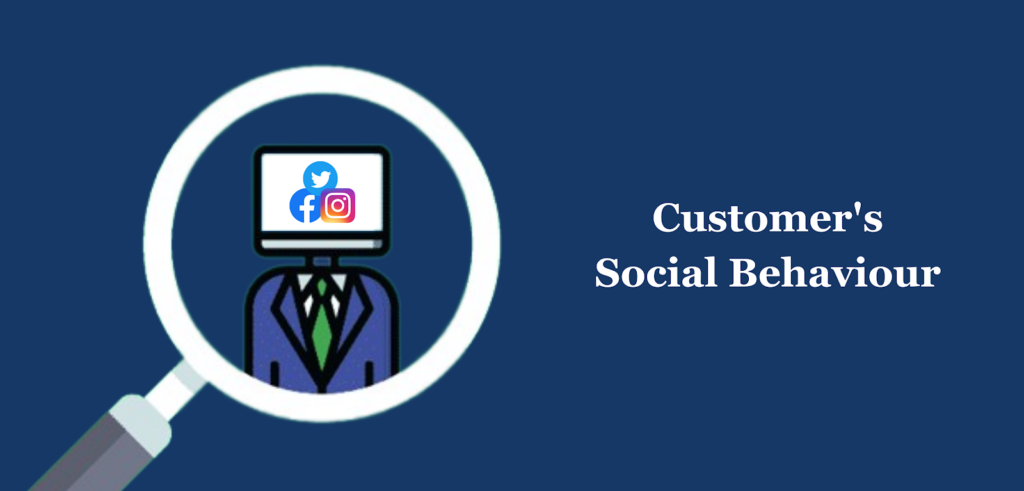
Knowing your customers helps you do better things for them.
So, start with understanding your customer’s social behavior. You can explore their online habits, such as;
- The platforms they prefer
- The type of content they like to share
- The topics they are passionate about
Understanding these parts of your customer helps you build a campaign in which your customers and target audience will be more interested.
Step 2: Fix a Type for Your UGC Campaign
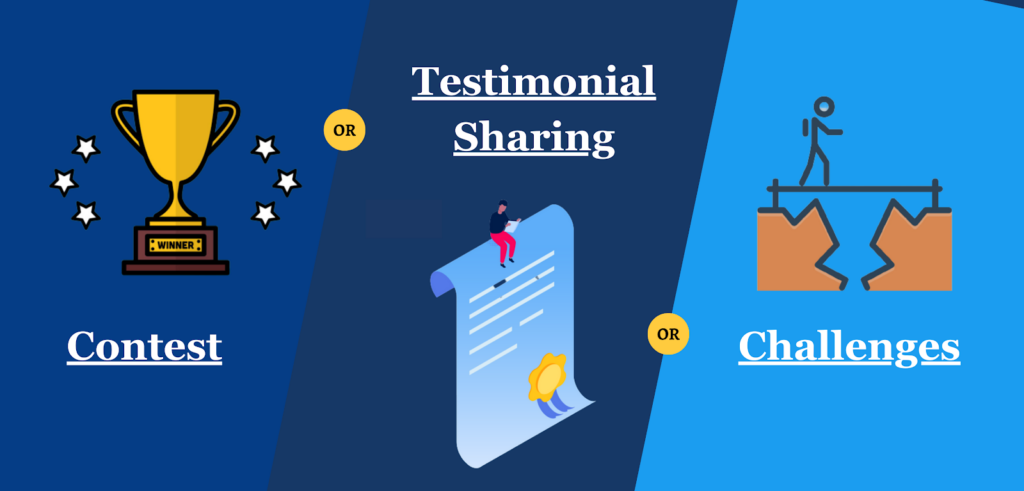
Once you’re done with understanding your customer’s behavior, you can start to choose between the types of UGC marketing campaigns that you want to run. The variety of UGC campaigns includes;
- Contests
- Challenges
- Testimonial Sharing
Or anything that may align with your eCommerce store niche and is exciting and engaging for your customers. Moreover, we already discussed the types of UGC content above, so you can get some help from there.
Step 3: Promote Your Campaign

When you’ve finalized the UGC campaign idea, It’s time to get the word out.
To do so, you can promote your upcoming campaign on social media channels, your website, or any other platform where your users hang out. If you want to attract a high number of potential customers, do follow these tips:
- Choose the right platform
- Make it a hashtag campaign
- Collaborate with influencers/celebrities
- Use proper visuals/engaging marketing copies
- Engage with your audience
These tips are no less than a secret seasoning that can help your UGC campaign spark even better, so consider them while promoting your UGC campaign.
Step 4: Make it Live

It’s time to make it live.
Once you’re done with all the preparations, you can get ready to receive a good amount of UGC. But first, double-check that all the necessary tools and resources are in place, and ensure your team is ready to handle the responses to your UGC campaign.
While your campaign is active, don’t forget that it is the best time to engage with your customers, repost content created by users, and show appreciation for their efforts.
And there you have it, your step-by-step guide to running a successful UGC campaign! Following these steps will lead you to a successful campaign launch.
Now, let’s get ahead, put our creative cap on, and understand how you can use this campaign outcome as your key to promoting your brand.
How to Leverage UGC for Your Brand Promotion?
So, until now, we’ve covered a lot about UGC, but let’s get to the good stuff:
- How can UGC actually promote your eCommerce store?
- What’s the game plan for all the awesome UGC you’ve collected from your campaigns?
Alright, let’s dig in and explore how you can squeeze the most juice out of the UGC content that you’ve gathered.
Use UGC For Ads and Promotional Content
The first and best use of your UGC content is in ad campaigns. If you ask why, Just imagine watching an ad where real people, just like you, are using and enjoying products. Wouldn’t you be interested in trying out for yourself? You would, Right?
So, take your UGC campaign content, and turn it into Facebook or Instagram ads, as people relate to real experiences more than polished ads. Doing this will help you attract your customers better way.
Here’s how Pampers turned UGC content into a great idea to promote their brand.

And here’s how you can use UGC content in your Ad campaigns.
- You can build Ad videos out of UGC testimonials
- You can share UGC that shows different usage of your products
- You can share UGC that shares customer success stories
And a lot more that resonates with your customers and effectively convinces them to take an interest in your products.
Showcase Customer Reviews and Testimonials on Your Website
I started this blog post by telling you about my habit of checking reviews before hitting that BUY button. And every customer has that habit. So collect those reviews/testimonials and proudly display them on your website.
Normally, you can place customer reviews and testimonials on many pages, such as:
- Home Page
- Product Pages
- About Us Page
But you can take things to the next level, by showcasing your testimonials in unique ways, and those unique ways include:
- Testimonial on exit-intent pop-up
- Testimonials in blog posts
- Testimonial below product title
- Testimonial on home page banner
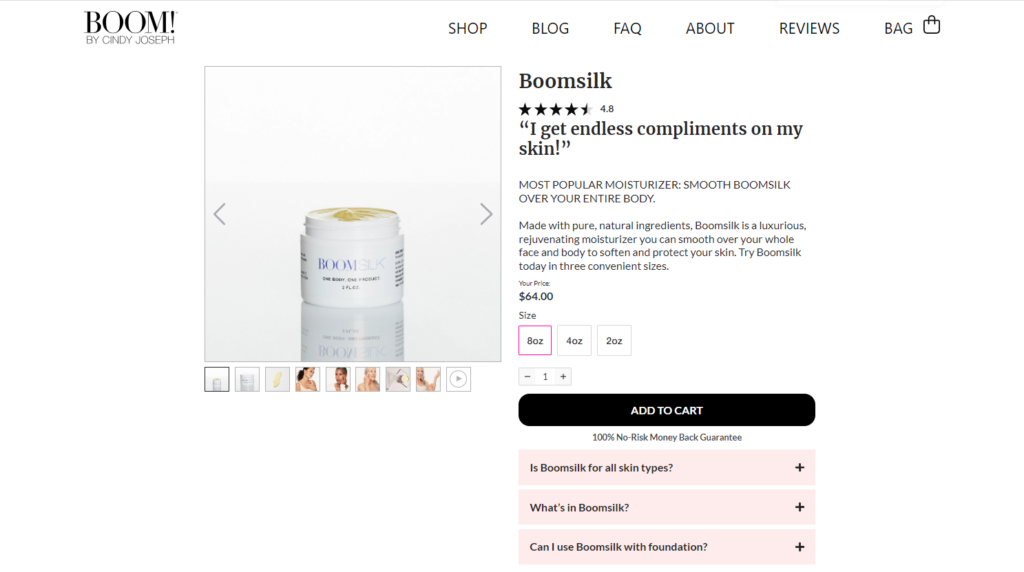
Here, I was able to find an example of how you can add one of your customer’s favorite product reviews and testimonials right below your product title on product pages. It’s like having your customers do the selling for you. Right?
Repost UGC as Social Media Posts
Your customers are already spreading the word about your products on social media channels. So, why not join the party?
Go ahead and share the valuable user-generated content on your social media accounts.

Let’s also go through some tips on how you can effectively repost or share user generated content.
- Express gratitude
- Respond to their comments early
- Feature it in your stories/posts
- Tag and give credit
By doing this, you’ll show your appreciation and your customers will feel more connected to your brand’s community.
This was all about how you can use UGC to create content where your customers promote your brand. But don’t forget that UGCs can be used only with your customer’s permission.
You can easily reach your customer and ask for their permission. Also, to maintain a good brand image, don’t forget to give them credit by tagging them.
Time to Wrap Up
All the things that we discussed above, make it clear how SMART it is to add UGC to your marketing strategy. After all, this is the era where people ask for social proof before thinking of making a purchase.
If you’re looking to add UGC to your marketing strategy, do it without a doubt. It helps you turn your casual shoppers into your biggest cheerleader who can’t stop talking about you. Ultimately, this increases your brand awareness, conversion rates, and more.
Moreover, UGC is far beyond just boosting your eCommerce sales and reaching new customers. It is also a medium for encouraging customers and building trustful relations with them by sharing real-life stories and experiences of your products.
Now, if you have any doubts regarding UGC, even a little one, don’t hesitate to type it in the comments below or contact us here.






Post a Comment
Got a question? Have a feedback? Please feel free to leave your ideas, opinions, and questions in the comments section of our post! ❤️